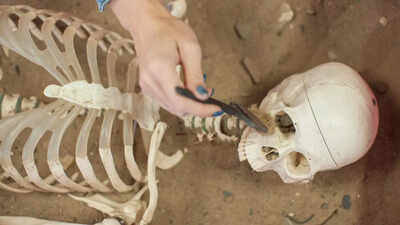- News
- How do archaeologists determine the gender of a skeleton?
How do archaeologists determine the gender of a skeleton?
Determining the sex of ancient skeletons is a complex process for archaeologists, relying on bone measurements, pubic bone analysis, and DNA testing. While methods like DNA analysis offer high accuracy, DNA isn't always preserved.
When archaeologists come across ancient human skeletons, one of the first things they try to do is figure out the gender of the skeleton, whether it was male or female. While it might sound straightforward, the process is neither simple nor it’s always accurate."Overall, we're looking at shape and size differences between the sexes," said Sean Tallman, abiological anthropologist at Boston University, in an interview with Live Science. However, he added, "no one method is 100% accurate."
Measuring bones
One common way to estimate sex is by measuring long bones, like the femur and tibia. These bones are generally larger in males. “On average, males are about 15% larger than females,” said Kaleigh Best, a biological anthropologist at Western Carolina University, in an interview with Live Science. Operation Sindoor
The Phenice method
This technique looks at specific features of the pubic bone. A taller and narrower pubic bone often means that it belongs to a male, while a wider one usually indicates a female. With this method, it is assumed that a trained expert can predict the sex of a skeleton with about 95% accuracy.DNA testing
By analyzing ancient DNA, scientists can often figure out the chromosomal sex with up to 99% accuracy. 
Credit: Canva
End of Article
Follow Us On Social Media











